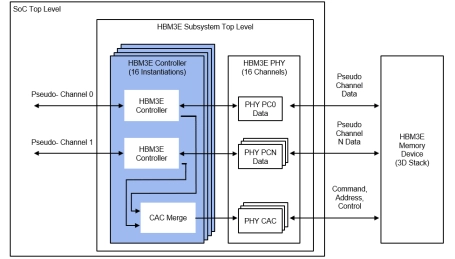HBM IP
HBM IP (High Bandwidth Memory Interface) cores enable high-speed data transfer between processors and memory, providing a significant performance boost for memory-intensive applications. Supporting advanced memory technologies like HBM1, HBM2, and HBM2E, HBM IP cores deliver ultra-fast data access, low latency, and high bandwidth, making them ideal for applications such as high-performance computing (HPC), artificial intelligence (AI), gaming, and data centers.
All offers in
HBM IP
Filter
Compare
63
HBM IP
from
13
vendors
(1
-
10)
-
HBM 4 Verification IP
- The HBM4 Verification IP provides an effective & efficient way to verify the components interfacing with HBM interface of an ASIC/FPGA or SoC.
- The HBM4 VIP is fully compliant with Standard HBM Version JESD270-4 specifications from JEDEC.
- This VIP is a light weight VIP with easy plug-and-play interface so that there is no hit on the design time and the simulation time.
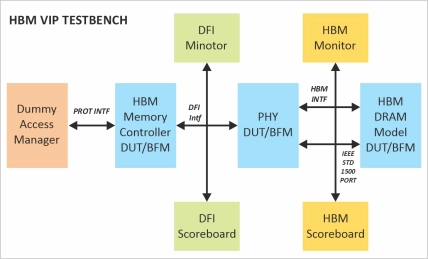
-
HBM4E PHY and controller
- Advanced clocking architecture minimizes clock jitter
- DFI PHY Independent Mode for initialization and training
- IEEE 1500 interface, memory BIST feature, and loop-back function
- Supports lane repair
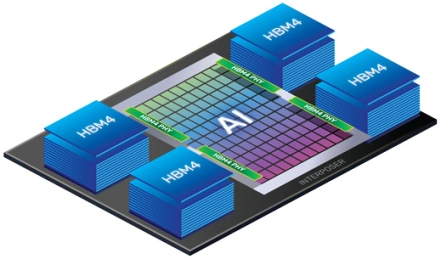
-
Verification IP for HBM
- HBM VIP is a comprehensive memory VIP solution portfolio for high bandwidth memory (HBM), targeting a new standard in memory performance, density, power consumption, and cost.
- HBM VIP is intended for SoC and memory control ler designers who employ external HBM modules and PHY developers to ensure both comprehensive verification and protocol and timing compliance.
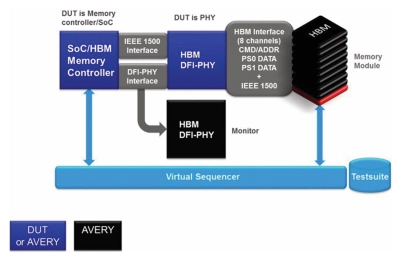
-
TSMC CLN3FFP HBM4 PHY
- IGAHBMZ03A is a High Bandwidth Memory 4 Physical Layer (HBM4 PHY) that is compliant with JEDEC HBM4 DRAM Specification JESD270-4.
- Fabricated in the TSMC 3 nm Advanced process node (N3P), it supports the data rate up to 12 Gbps per data pin in the DDR PHY Interface (DFI)-like 1:4 clock frequency ratio (HBM4 controller clock: WDQS = 1:4).
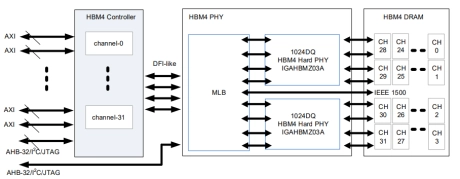
-
HBM4 Memory Controller
- Supports HBM4 memory devices
- Supports all standard HBM4 channel densities (up to 32 Gb)
- Supports up to 10 Gbps/pin
- Refresh Management (RFM) support
- Maximize memory bandwidth and minimizes latency via Look Ahead command processing
- Integrated Reorder functionality
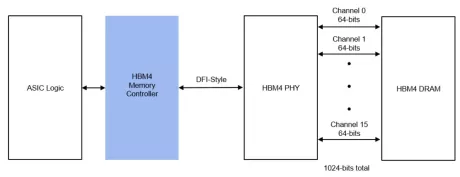
-
High Bandwidth Memory 3 (HBM3/3E) IP optimized for Samsung SF4X
- The HBM3 IP consists of a PHY and memory controller optimized for Samsung SF4X process to support the HBM3 memory standard (JESD238A) operating at up to 9.6 Gbps/pin.
- The HBM3 IP is designed for high memory throughput and low latency applications while minimizing area and power consumption.

-
HBM4/3E Combo PHY & Controller
- The fourth-generation and third-generation HBM (HBM4/3E) technology is outlined by the JESD238A standard (for HBM3E) and an upcoming specification (for HBM4)
- These technologies feature 256-bit memory access per channel, with a 1024-bit input/output interface for HBM3E and up to a 2048-bit interface for HBM4

-
HBM3 PHY IP at 7/6nm
- Compliant with JEDEC JESD238 HBM3
- DFI5.1-based interface with memory controller
- Compliant with ESD requirements
- Supports up to 16-bit independent and asynchronous channel

-

-
HBM3E/3 Memory Controller
- Supports HBM3E / HBM3 memory devices
- Supports all standard HBM3 channel densities (up to 32 Gb)
- Supports up to 9.6 Gbps/pin (HBM3E) or 8.4 Gbps/pin (HBM3)
- Refresh Management (RFM) support
- Maximizes memory bandwidth and minimizes latency via Look-Ahead command processing
- Integrated Reorder functionality
